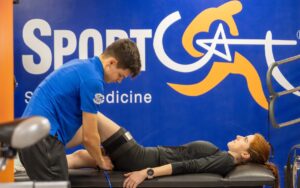Cardiac variability and its role in sports planning
For years, it has been evident that cyclists, even at an amateur level, are increasingly attaining heightened levels of performance thanks to, amongst other things, greater access to data concerning our physiology and how the body handles physical exertion. One such available dataset is that which is provided by Heart Rate Variability (HRV), a measure that is gaining increasing importance in sports planning.
HRV, as the name suggests, gives us insight into the time intervals between heart beats. This measure provides valuable information about our cardiovascular health and recovery status. It does not just focus on the average training heart rate; it also examines the fluctuations within these intervals. In doing so, it gives us a more complete understanding of how our nervous system responds both during training and racing, as well as during day-to-day situations.
A cyclist with high HRV will be able to quickly adapt to the changing demands of a race, and recover better during and after periods of physical exertion because their systems will know when to relax or activate more efficiently.

Obtaining this information will aid us in identifying the optimal periods to increase training intensity or incorporate rest. Consequently, our planning will adopt a more personalized approach, relying less on empirical methods and thereby mitigating the risks of overtraining and the potential injuries that can occur as a result.
In addition to providing an insight into the body’s ability to recover from stress and physical exertion, HRV can assist in informing habits like nutrition, training schedules, rest periods, pre-training meals, and supplement intake. You will need to make gradual changes, sustain them for a while, and monitor the potential changes in HRV.
This story is part of Nafent Magazine volume 9. Read the full story in our digital or paper magazine. Go to our webshop, or buy yours at one of our 200 partner places.
Related stories






